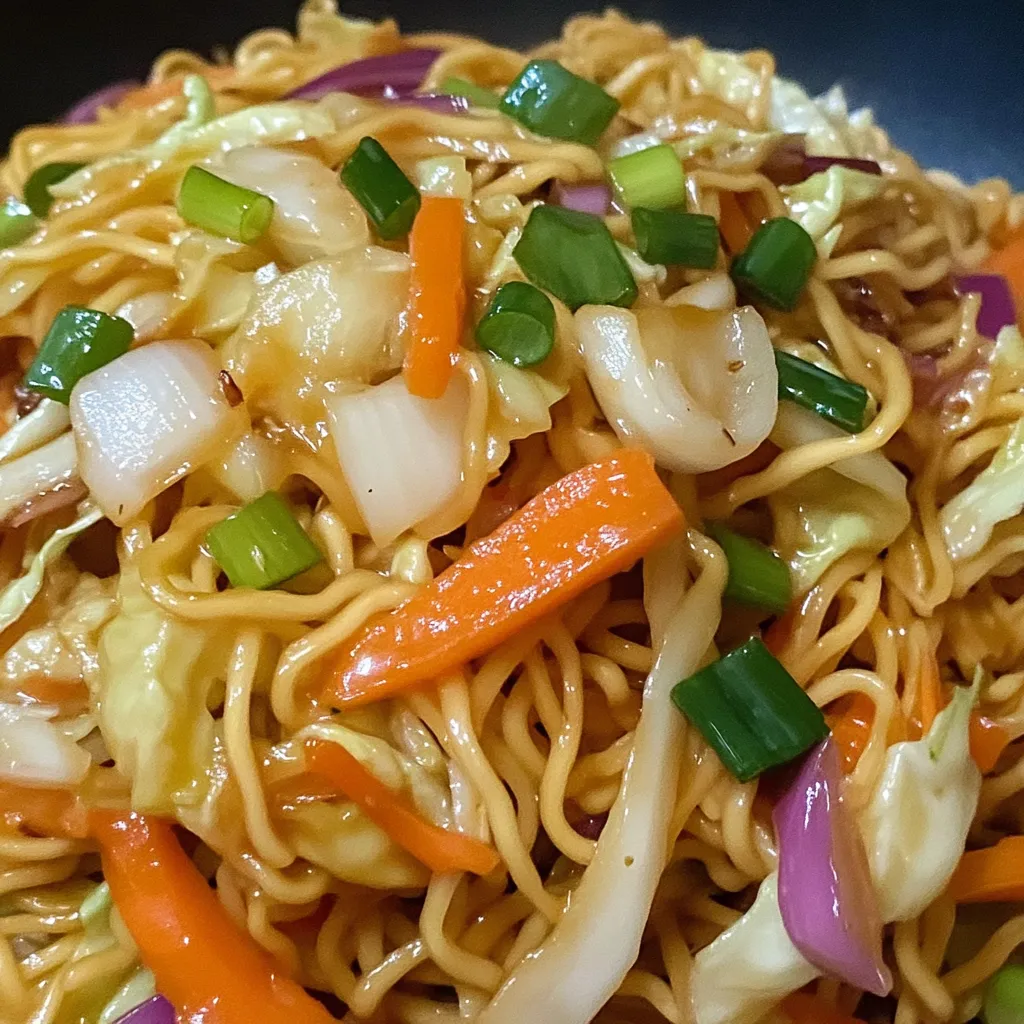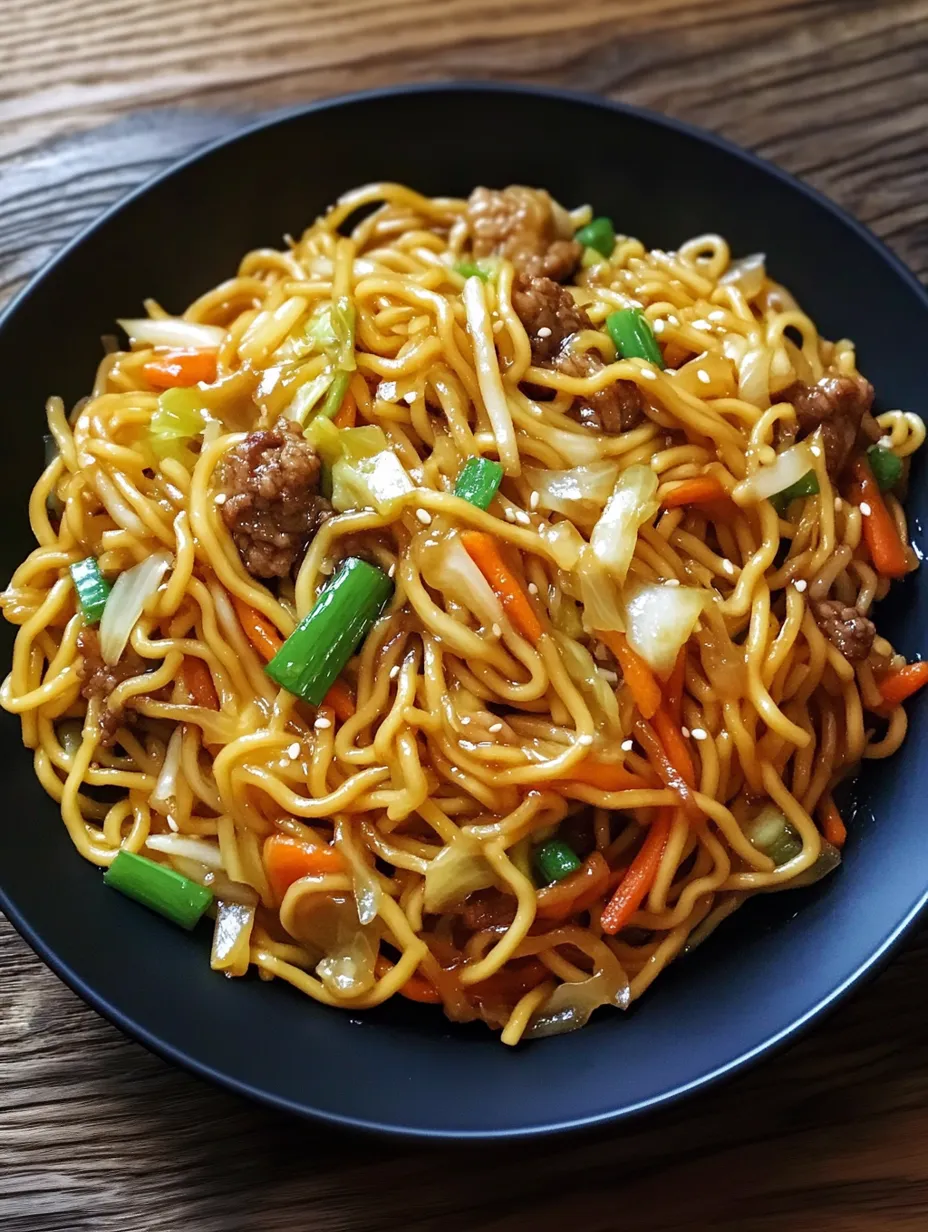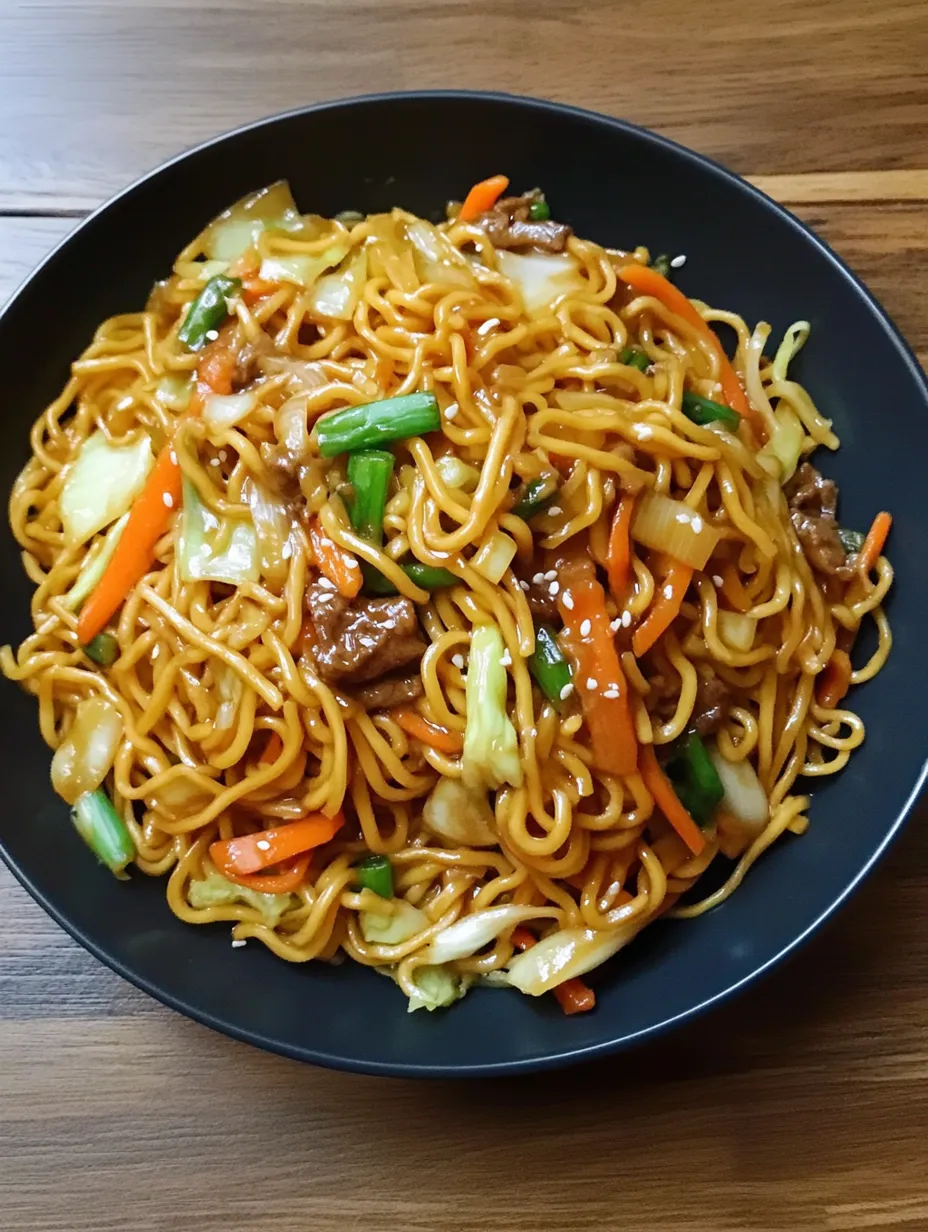 Pin it
Pin it
Slurp-worthy lo mein noodles tossed in a glossy sauce come together faster than delivery could ever arrive at your door. I stumbled upon this recipe after dropping ridiculous amounts of money on take-out every week, and it's become my go-to weeknight meal when cravings hit. The beautiful thing about homemade lo mein is how the fresh vegetables maintain their crisp texture, unlike the sometimes soggy take-out version, and you control exactly what goes in – no mystery ingredients or excessive oil.
Why You'll Love This Recipe
- Ready in just 15 minutes from start to finish
- Uses simple ingredients you can find at any grocery store
- Customizable with whatever vegetables you have on hand
- Satisfies take-out cravings without the expense or wait
- The sauce creates that authentic restaurant flavor at home
My kids were skeptical the first time I made this instead of ordering our usual Friday night Chinese food. My 12-year-old actually accused me of secretly ordering take-out and transferring it to our bowls! Now they request "mom's noodles" specifically and love helping slice the vegetables – though I still handle the hot wok part while they watch from a safe distance.
Ingredients
- Egg noodles should be slightly undercooked before hitting the wok – they'll finish cooking in the sauce
- Allow cooked noodles to drain thoroughly to prevent a watery sauce
- Fresh vegetables should be cut uniformly for even cooking
- Garlic should be minced rather than pressed for the best flavor release
- The sauce ingredients must be mixed completely before adding to ensure cornstarch dissolves properly
I learned the hard way about properly draining noodles after serving my husband what essentially became noodle soup on our anniversary. Now I give them a good shake in the colander and even pat them with paper towels if I'm feeling particularly thorough. My grandmother would probably roll her eyes at this – she never measured a thing when making noodles, but somehow they turned out perfectly every time.
 Pin it
Pin it
Step-by-Step Instructions
- Veggie Prep
- Slice your yellow onion into thin half-moons that will soften quickly in the hot pan. Cut carrots into matchsticks or use a vegetable peeler to create thin ribbons that cook rapidly. Shred the cabbage as finely as possible – thick pieces remain too crunchy and don't absorb the sauce well. Mince the garlic finely but don't crush it, which can make it burn and taste bitter. Cut green onions on a diagonal for both visual appeal and better texture.
- Sauce Magic
- Combine dark soy sauce and regular soy sauce in a small bowl – the dark variety provides color while the regular brings saltiness. Add brown sugar and stir until it begins dissolving, then add water, oyster sauce, and sesame oil. Sprinkle cornstarch across the surface rather than dumping it in one spot, which prevents clumping. Add white pepper last and whisk everything thoroughly until the mixture looks uniform with no white cornstarch visible at the bottom.
- Noodle Perfection
- Bring a large pot of water to a rolling boil before adding your egg noodles. Stir immediately to prevent sticking, then time exactly 5 minutes – a minute less than package directions typically suggest. Drain immediately and rinse under cold running water, tossing the noodles with your fingers to stop the cooking process completely. Shake off excess water thoroughly and set aside uncovered so they don't steam and become gummy.
- Wok Technique
- Heat your wok or large skillet until it's smoking hot before adding a small amount of neutral oil. Add garlic first and stir continuously for just 10 seconds until fragrant but not browned. Toss in carrots and onions, keeping them moving constantly using a scooping motion with your spatula. After they begin to soften, add cabbage and continue the constant movement. As soon as cabbage begins to wilt slightly, add the well-drained noodles, prepared sauce, and green onions all at once. Toss everything together quickly using tongs or two utensils until every noodle is gloriously coated in the thickening sauce.
The sesame oil is what makes this dish sing with authentic flavor. My sister once tried substituting olive oil because she ran out of sesame, and while still edible, it lacked that distinctive nutty aroma that makes your kitchen smell like a proper Chinese restaurant. I keep a small bottle specifically for finishing Asian dishes – a little goes a remarkably long way, and using it only as a finishing touch preserves its delicate flavor that would otherwise burn off during high-heat cooking.
Versatile Variations
Transform this basic recipe by adding protein like thinly sliced chicken, beef, or shrimp – just cook them first and remove from the pan before starting vegetables. Vegetarians can toss in cubed tofu or edamame for protein. Switch up the vegetables based on what's in your fridge – bell peppers, snow peas, mushrooms, or baby corn all work beautifully. For spice lovers, add a teaspoon of chili oil or sriracha to the sauce mixture.
Serving Suggestions
Serve lo mein as a complete one-dish meal or alongside simple steamed dumplings for a more substantial spread. For authentic Chinese restaurant vibes, dish it up in small bowls as part of a larger family-style meal with kung pao chicken or beef and broccoli. Don't forget to have extra soy sauce and chili oil available for those who like to customize their heat and salt levels. Chopsticks are optional but add to the experience!
Leftover Magic
Store any leftovers in an airtight container in the refrigerator for up to three days. The noodles will absorb more sauce as they sit, so when reheating, add a splash of water and a few drops of soy sauce to rejuvenate them. For best results, reheat in a skillet rather than microwave to maintain the texture. Leftover lo mein also makes an amazing base for next-day lunch – top with a fried egg for a savory breakfast-for-lunch situation that will make your coworkers jealous.
 Pin it
Pin it
Chef's Tips
Toast sesame seeds to sprinkle on top for extra texture and nutty flavor
Dark soy sauce can stain, so wear an apron when mixing the sauce
If noodles stick together after cooking, rinse again with warm water and separate with your fingers
A touch of MSG (if you're not sensitive) adds that authentic take-out flavor
My journey with homemade Chinese food started after moving away from New York City, where amazing take-out was available on every corner. In my small town, the nearest Chinese restaurant was thirty minutes away and often disappointing. After numerous test batches and video calls with my college roommate's Chinese grandmother, this recipe emerged as the closest thing to authentic take-out noodles I could create. The first time I got it right – that perfect balance of chewy noodles, crisp-tender vegetables, and that glossy, flavorful sauce – I did a little dance in my kitchen. Now it's in regular rotation, not just because it's quick and easy, but because it genuinely satisfies those cravings better than most restaurant versions I've tried.
Frequently Asked Questions
- → Can I add protein to this lo mein?
- Absolutely! Add chicken, beef, shrimp, or tofu. Cook the protein first, set aside, then add back with the noodles and sauce.
- → What vegetables work best in lo mein?
- Besides the recipe's cabbage, carrots and onions, try bell peppers, mushrooms, bean sprouts, bok choy, or snow peas.
- → Can I make this gluten-free?
- Yes, use rice noodles instead of egg noodles and tamari or gluten-free soy sauce in the sauce mixture.
- → Is there a substitute for oyster sauce?
- For vegetarian options, use hoisin sauce or mushroom oyster sauce. For general substitutes, try fish sauce with a bit of sugar.
- → Can I make the noodles ahead of time?
- Cook noodles slightly undercooked, rinse with cold water, and toss with a bit of oil to prevent sticking. Store refrigerated up to a day before using.
- → Why did my noodles clump together?
- Make sure to rinse noodles with cold water after cooking and toss with a little oil if not using immediately.
